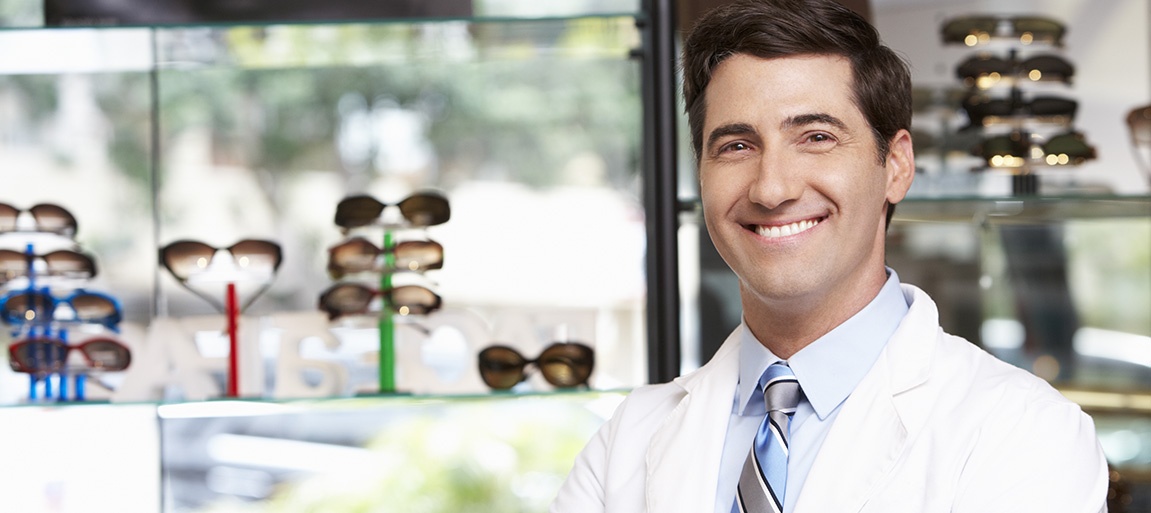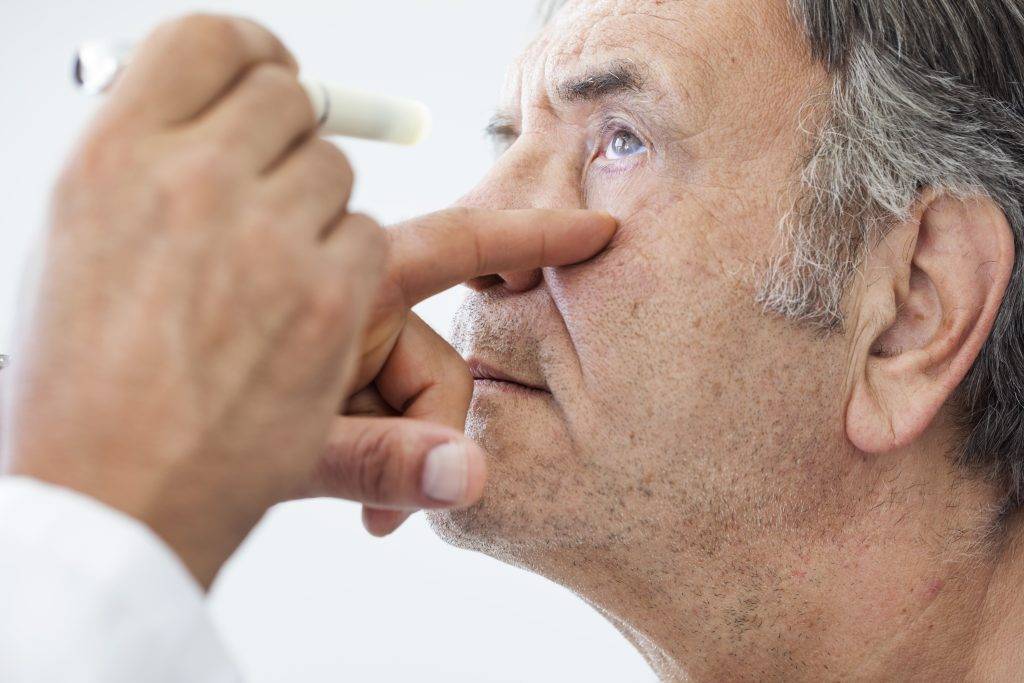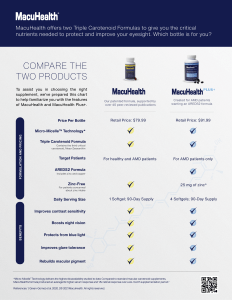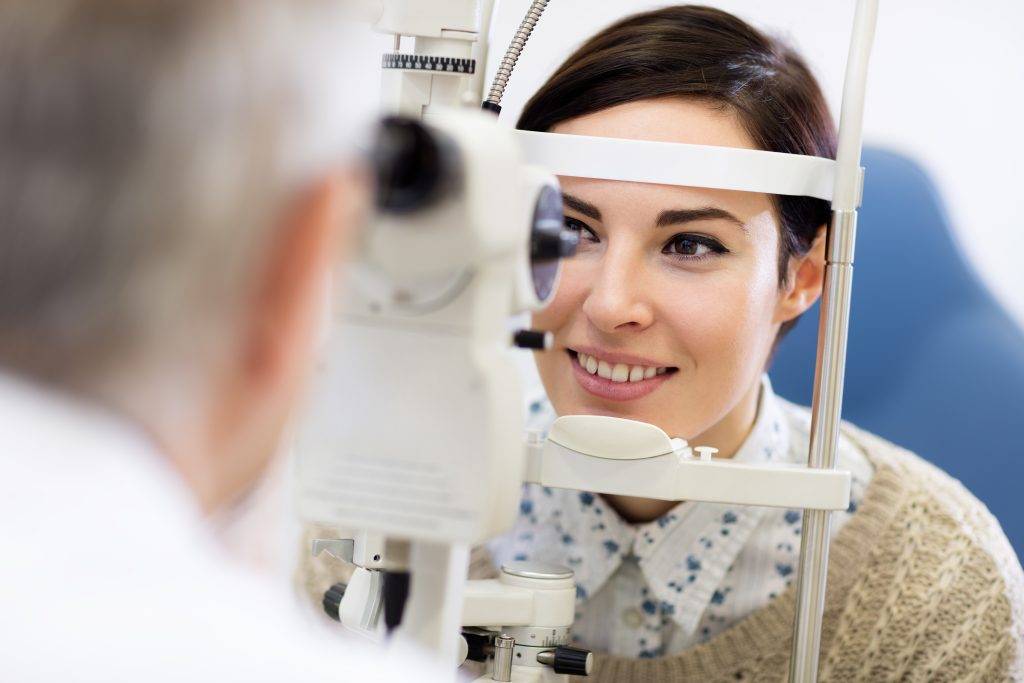- Home
- >
- AMD

- Last Updated
AMD
Written by MacuHealth
Reviewed by Jim Stringham, Ph.D.
Reading letters off the wall of our eye care specialists’ office is the eye test we’re probably most familiar with. Doctors have used it to measure clarity of vision – or visual acuity – for over a century because it’s reliable in helping to determine refractive error (blurry vision) and legal blindness. It serves as a good metric to track and manage ocular disease. But over the last several decades, the field of optometry has changed, and there are now many other methods for specialists to determine the quality of your vision.
We’ll look at another test your eye care professional can utilize to determine the quality of your visual function – contrast sensitivity. We’ll also examine how this aspect of your eyesight can help you in the real world and how the best eye supplements can help improve it.
What Does Visual Acuity Measure?
As stated above, if you’ve looked at a wall chart of letters or symbols during an exam, your eye care specialist is trying to determine your visual acuity. It’s a quick and easy way for your doctor to determine if your vision has changed and help them discover if you need an eyeglass or contact lens prescription.
A fraction, such as 20/20, symbolizes your visual acuity result. For example, if you have 20/20 vision, you can clearly see an object of a given size 20 feet away. This number doesn’t mean you have perfect sight – it is considered “good” vision. Most people won’t even have 20/20 vision unless prescribed corrective lenses. Not even the best eye supplements can help improve your result. Visual acuity depends largely on the optics of the eye and often requires corrective lenses.
What Is Contrast Sensitivity?
Contrast sensitivity is the ability to detect subtle differences in shading and patterns. It effectively allows us to distinguish objects in our visual field. It’s an essential measure of visual function, especially in situations of low light, fog or glare, when the contrast between objects and their environment is reduced. Having good contrast sensitivity is vital for driving at night.
A contrast sensitivity test measures your ability to distinguish between finer and finer increments of light versus dark. Often individuals can detect differences as low as 2 percent. In terms of “real-world” vision, a contrast sensitivity test captures significantly more information than a visual acuity test.
Your contrast sensitivity may not be up to par, even if you have 20/20 visual acuity. Interestingly, research shows that nutritional supplements containing the three macular carotenoids (Lutein, Zeaxanthin and Meso-Zeaxanthin) can boost contrast sensitivity.
How Is Contrast Sensitivity Measured?
There are two general contrast sensitivity tests. The most widely used is the Pelli-Robson test, which consists of different capital letters organized in horizontal lines. The contrast decreases with each line. You read the letters down the chart to determine the level you can see. A better contrast sensitivity test is a sinewave grating test. It consists of several dark and light parallel bars to provide a more acute way to see how your eyes detect contrast.
As you may know, contrast sensitivity testing isn’t part of a typical eye exam. If you feel something is affecting your visual contrast, ask your eye care professional to perform a Pelli-Robson or sinewave grating test.
What Can the Best Eye Supplements Do to Improve Contrast Sensitivity?
A contrast sensitivity test will allow your eye care professional to determine if your visual performance is reasonably good. It can also potentially detect eye disease much sooner – allowing them to recommend a treatment plan based on your needs.
In many cases, your doctor may recommend supplements to rebuild macular pigment and optimize the use of light at the retina in a way that eyeglasses and contact lenses cannot provide. MacuHealth’s patented formula is one of the best eye supplements available, and many doctors recommend it because it is scientifically proven to improve contrast sensitivity and visual performance. To learn more, click here to shop for MacuHealth now.













